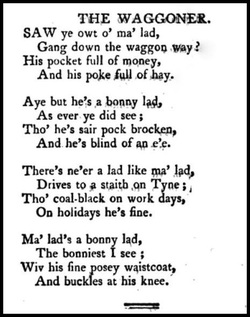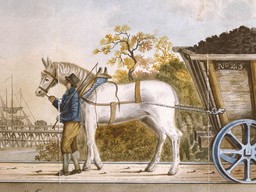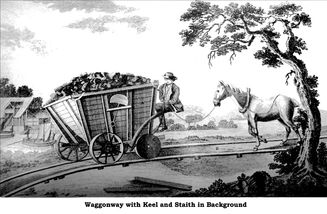Later versions may have been somewhat extended for example with the addition of verses:
He works down the pit.
He never comes to see me
Unless he wants a bit.
With his silver in his hand
And with love in his e'e
I see my canny lad
A-coming to me.
sair pock brocken (marked by small-pox or chicken-pox, having a scarred or pitted skin) also seemed to have been changed into the more romantic sounding sair frowsy freckled (but that's only because I didn't know that frowsy means unkempt or untidy).
For those of us not native Geordie speakers there are a few useful aids for translation online. The use of the word canny in the song is discussed here.
There were two categories: those that provided their own horse and those that used the company's horses. They would often be tenants from neighbouring estates, using the job seasonally to supplement their income.
A Wylam Colliery bond describes how Christopher Blackett employed his drivers in 1804. Between March and October the men were paid 6d for leading a chaldron waggon (53cwt) to Lemington and unloading the coal at the staiths. In the winter months, an additional 1d was paid. The waggonway was 5 miles long and men were expected to make 3 return trips a day (30 miles) within a 12 hour shift.
They would not normally be paid for the return journey unless carrying a cargo (such as wood) for which they were paid 3d.
In total they could expect to earn about £20 a year which was a reasonable wage at the time. Heavy fines were imposed for riding on the full waggons and for hauling empty waggons on the Main Way when a separate Bye Way was provided specifically for that purpose. The latter would often be maintained at a lower specification (e.g. wood instead of iron plate rails) as wear would be less.
Horses were a considerable expense, both to buy and keep (£50 per year was recorded in 1820). Oxen were cheaper and slower, but were used at Wylam.




 RSS Feed
RSS Feed
